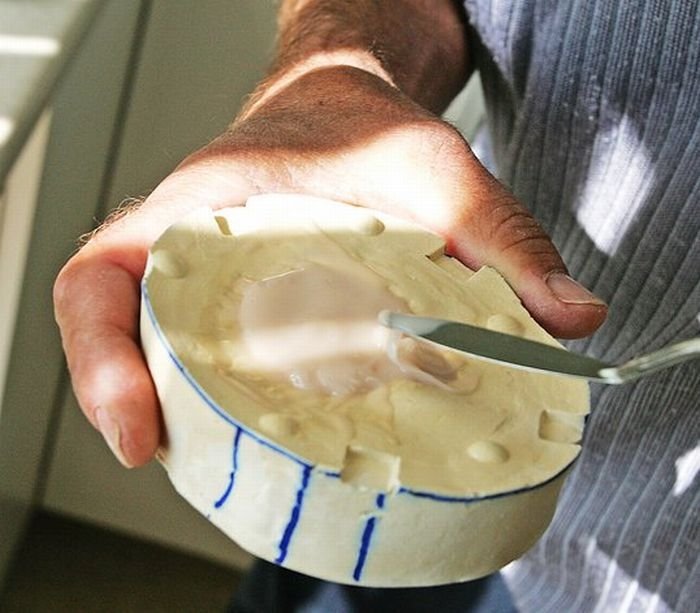|
|
Little Girl Gets New Ear And Cochlear Implant
|
In 1970, Robin Michelson, M.D. reported preliminary results of cochlear implantation in three deaf adults implanted with gold wire electrodes. Initially he teamed with Mel Bartz, an electrical engineer working with Storz, Inc. Michelson's report to the American Academy of Otolaryngology and Ophthalmology created a tempest. Orthodox auditory theory was in confusion at the time, and it was not thought possible for direct electrical stimulation of neural tissue to convey meaningful sound to the brain. Michelson conducted some work in San Francisco, in the Coleman Laboratory at the University of California, a foundation funded by the wealthy ENT department chairman at UCSF, Francis Sooy, MD. Michelson's implantation of humans before animal physiology experiments caused consternation among physiologists, audiologists, and many otologists who questioned his veracity and professional ethics, and the matter became a concern to the ENT department. An otolaryngology resident, C. Robert Pettit, heard Michelson results of his cochlear implantations at a department educational meeting. He ran to the Coleman Laboratory, where Michelson spent one half-day per week away from his Redwood City private ENT practice, and told the older surgeon of his dream since college of a multi-channel electrode resembling a hairbrush. Michelson said so many stimulus points were not necessary and that his patients were hearing "in stereo" with a two-channel electrode he had designed. Michelson and Pettit teamed to build the bipolar electrodes embedded in silastic which replaced the broken gold electrodes in Michelson's three patients. The reimplantation procedures were carried out in Redwood City Community Hospital, not at UC San Francisco, as were the original implants.
When Michelson reported initial results of the reimplantation, in 1971, another hue and outcry arose: He was accused of lying about results and of unethical human experimentation. Michelson could not bring his brainchild to the university setting yet. Pettit was incensed when he witnessed Michelson's humiliation at the meeting. He had assisted in the reimplantation surgeries and witnessed the fact that the patients, when tested on the operating room table, could hear something meaningful. He decided to document on film the results of testing on the reimplanted patients to prove to the scientific community that electrical stimulation could result in meaningful sound perception.
Sooy, the UCSF department chairman, recruited Michael Merzenich, a young PhD, to carry out his research interests in neurophysiology, mapping the inferior colliculus, and to investigate the potential of cochlear implantation. Merzenich was enormously skeptical of the cochlear implant project but agreed to test cats Michelson and Pettit had implanted. Merzenich was skilled at constructing micro-electrode needles capable of penetrating single nerve cells without rupturing the cell membranes and spilling cell contents. He agreed to monitor electrical activity in inferior colliculus cells of cats stimulated by normal sound in one ear, and electrical input from a cochlear implant in the other ear, finding both auditory stimuli similar. Merzenich had constructed an advanced electronic bank of signal generating and monitoring equipment for use for in his mapping experiments and a carefully shielded soundproof booth for testing. Over the months of animal testing, Merzenich became convinced that the electrical signal from the cochlear implant was entering the brain and was "phase-locked." Understanding what humans heard with the cochlear implant was another matter.
New tests were devised for implanted patients. One was congenitally deaf and had never heard sound. Pettit employed a music professor to synthesize simple tunes and sounds in various sound envelopes, and new pitch and loudness-scaling tests were devised. When one of the reimplanted patients was tested by the team under carefully controlled laboratory conditions, in 1972, a Moog synthesized version of "Where Have All the Flowers Gone" was presented to the patient through the cochlear implant. The camera caught the patient humming the melody and tapping a pencil to the tempo of the tune. That sequence convinced the department chairman to support the cochlear implant project. When the film was shown to a meeting of otologists later in 1972 it convinced the scientific community that meaningful sound could be conveyed to the brain by electrical stimulation of the auditory nerve.
|
|









